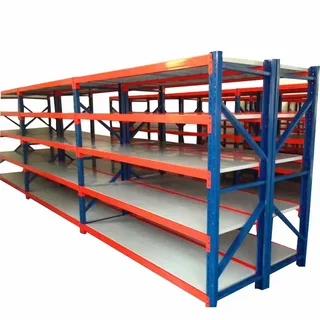In both industrial and commercial settings, storage efficiency is key to maintaining an organized and productive workspace. Heavy-duty storage racks provide a robust solution for storing large, bulky, or heavy items in warehouses, garages, retail spaces, and workshops. Choosing the right storage system not only optimizes space but also enhances safety and operational efficiency. This guide will provide an in-depth analysis of heavy-duty storage racks, their benefits, types, materials, and factors to consider when selecting one.
What Are Heavy-Duty Storage Racks?
Heavy duty storage racks are specialized shelving systems designed to withstand substantial weight loads. Unlike standard shelving, these racks are engineered to support industrial-scale storage, often holding thousands of pounds per shelf. They are commonly used in warehouses, distribution centers, and manufacturing facilities where large inventories or heavy equipment need to be stored securely.
Benefits of Heavy-Duty Storage Racks
1. Maximized Space Utilization
Heavy-duty racks allow for vertical stacking, maximizing the available floor space. This is especially useful in warehouses where optimizing square footage is crucial.
2. Enhanced Durability and Longevity
Constructed from high-strength steel or aluminum, these racks are built to endure heavy loads and harsh conditions, ensuring long-term durability.
3. Improved Safety
Heavy-duty racks are designed to withstand high-pressure loads without collapsing, reducing the risk of workplace accidents.
4. Customizable and Scalable
Many heavy-duty storage solutions are modular, allowing for expansion as storage needs grow.
5. Better Organization
With clearly defined storage areas, businesses can maintain an orderly inventory system, reducing retrieval time and improving workflow efficiency.
Types of Heavy-Duty Storage Racks
1. Pallet Racks
Pallet racks are the most common type used in warehouses. They allow for easy storage and retrieval of palletized goods using forklifts. Popular subtypes include:
Selective Pallet Racks – Easy access to every pallet.
Drive-In/Drive-Through Racks – Designed for high-density storage, with forklifts driving directly into the racks.
Push-Back Racks – Use gravity rollers to store multiple pallets in a single lane.
2. Cantilever Racks
Designed for long and bulky items such as lumber, pipes, and furniture, cantilever racks consist of horizontal arms attached to a central vertical column.
3. Mezzanine Racking Systems
These multi-tiered racks create additional storage levels, making the most of vertical space without requiring structural modifications to the building.
4. Boltless Shelving (Rivet Racks)
Ideal for hand-loaded items, these racks are easy to assemble and adjust without the need for bolts or screws.
5. Wire Decking Racks
Used for increased visibility and air circulation, wire decking prevents dust buildup and allows for better fire safety compliance.
Materials Used in Heavy-Duty Storage Racks
Steel – The most common and durable material, often powder-coated for added rust resistance.
Aluminum – Lightweight and corrosion-resistant, ideal for environments where moisture is a concern.
Wood (Particleboard or Plywood Decking) – Used as shelving surfaces, often combined with metal frames for structural support.
Key Factors to Consider When Choosing Heavy-Duty Storage Racks
1. Load Capacity
Understanding weight limits is crucial to preventing overloading and ensuring workplace safety. Manufacturers provide specifications regarding maximum weight per shelf and per unit.
2. Space Availability
Assess your storage area’s dimensions, ceiling height, and available floor space to choose racks that maximize capacity without obstructing workflow.
3. Accessibility Needs
Consider how frequently items will be accessed. For high-turnover inventory, selective pallet racks offer the best accessibility, while push-back or drive-in racks work better for bulk storage.
4. Adjustability and Scalability
If your business is growing, opt for heavy duty storage that can be expanded or reconfigured as needed.
5. Compliance with Safety Standards
Ensure your storage solution meets Occupational Safety and Health Administration (OSHA) and other relevant industry safety standards.
Maintenance and Safety Tips for Heavy-Duty Storage Racks
Regular Inspections: Check for signs of wear, rust, or damage to prevent structural failures.
Proper Weight Distribution: Ensure loads are evenly distributed to prevent tipping.
Secure Anchoring: Racks should be anchored to the floor or walls to improve stability.
Employee Training: Staff should be trained on load limits and proper storage techniques.
Conclusion
Heavy-duty storage racks are essential for businesses looking to enhance organization, improve safety, and maximize storage efficiency. By understanding the different types, materials, and key considerations, you can choose a system that meets your specific needs. Investing in the right storage solution will not only streamline operations but also provide long-term cost savings by preventing damage and optimizing space.


 :
: